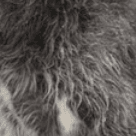
German Spitz Breed description: Character & Co
Facts & Origin
The German Spitz
The Spitz is one of the oldest breeds of domestic dog in Germany, although its origins have not been fully clarified. Already 4,000 years ago Spitz-like dogs are said to have lived together with humans. The primal relatives of your dog were regarded as watchdogs on farms and in households of petty bourgeois. He also found his place in literature as well as in painting.
Breed characteristics of the German Spitz
The breed of the German Spitz belongs under the FCI standard number 97 to the group 5, dogs Spitz of the original type, as well as to the section 4, European Spitz. In the total of five different varieties, the size is fixed by the FCI, but the weight is not.




| Alternate Name | Small Spitz, Large Spitz, Medium Spitz |
| Origin | Germany |
| Life expectancy | 10 - 14 years |
| Care requirements | high-maintenance |
| Activity level | average |
| FCI group | European Spitz |
| AKC group | Foundation Stock Service |
| KC group | utility group |
Attitude, character and temperament of the breed
Character of the Großspitz and Mittelspitz and Kleinspitz
The German Spitz is a very alert dog, but has no hunting instinct. Your dog is basically a rather well-balanced quadruped, which is always loyal and affectionate to his mistress or master. Towards strangers, however, the Spitz behaves somewhat distant at first. It is typical for your dog that it can be very possessive. Thus it would like to follow and accompany its human friends at every turn. Training a German Spitz is usually pretty straightforward. Your dog is an excellent family dog and should never have to spend his life in a kennel. However, you can certainly keep him in a city apartment as long as he gets enough walks.
The Spitz generally has a reputation as a yapper, but this is definitely not the rule, and is often due to faulty training. The German Spitz is also used as a therapy dog in many cases. Although your dog is known for its lively nature, it does not need a lot of exercise. Its regular walks are quite enough for him. However, the German Spitz is quite a fan of some dog sports such as flyball or agility.
Character
Usage

Health and breeding information
Typical diseases
Typical breed diseases are rather rare in the German Spitz. In larger Spitz, hip dysplasia could occur in some cases, the smaller ones could be affected by patellar luxation, for example. Due to a possible weakening of the suspension, the patella could also jump out of the guide.
Breeding German Spitz puppies - where, how, what?
If you are looking for a Miniature Spitz, make sure that the breeder is trustworthy. Breeders should be aware of the rules of the Animal Welfare Act and the Animal Welfare Dog Ordinance and of course comply with them. You can also recognize good breeders by the fact that they have regularly participated in training courses.


Appearance and coat
The Wolfsspitz, known in Holland as the Keeshond, is basically grey clouded, that is, silver-grey with black tips, or often simply grey, cream or black.
According to today's breed standard, the Großspitz can have a white, brown or even black coat. With the medium, small and also the dwarf spitz the colours can be white, brown, black, grey cloudy or also orange.
Your dog generally possesses a dense coat, which is luxuriant and two-layered. The long and protruding coat is characterized by a kind of mane on the neck. His hind legs are also heavily coated. The German Spitz's long-haired tail is bushy and presents a curl across his back. The dense coat of your robust and undemanding companion is definitely quite easy to maintain. It should be a matter of course to brush him regularly and check his ears and paws.
How big does a German Spitz grow, how much does he weigh and how old does he get?
| German Spitz Type | Size |
|---|---|
| Pomeranian | 20-22 cm |
| German Miniature Spitz | 26-29 cm |
| German Medium size Spitz | 34-38 cm |
| German Giantspitz | 46-50 cm |
| German Keeshond | 49-55 cm shoulder height |
Weight
| Spitz type German Spitz | Weight |
|---|---|
| German Pomeranian
|
until 3kg |
| German Miniature Spitz
|
up to 5 kg |
| German Middle size Spitz
|
up to 10 kg |
| German Giantspitz and Keeshond
|
up to 20 kg |
Age
The German Spitz has an average life expectancy of about 14 years.
| Fur length | long |
| Fur | flat coated |
| Ear shape | Standing Ears |
| Tail | fanned out |
| Anatomy | square |
| Size ♀ | 20 - 55 cm |
| Weight ♀ | 3 - 20 kg |
| Size ♂ | 20 - 55 cm |
| Weight ♂ | 3 - 20 kg |
| Suitable For | - |
Colors






Known Diseases
Hip dysplasia (HD)
The hip dysplasia or hip joint dysplasia of the dog (HD) is a maldevelopment of the hip joint.
Patellar luxation
Patellar luxation is the term used to describe a displacement of the kneecap, which is one of the most common causes of lameness in dogs.
Useful Articles
You can find articles that might interest you in the dogbible blog to match your favorite breed.
Visit our magazineto stay up to date on dog trends.
To find out more, view our Privacy Policy
Find here the breed that suits you and find out what character traits it has. Here you can also learn more about the origin, size and weight of your favorite breeds.
Matching your favorite breed, you'll find articles that might interest you on the dogbible dog blog.
PRA (Progessive Retinal Atrophy) in dogs - what you need to know about it
3 Tips: Dog Pregnancy - cause and signs
Leaving your dog alone - how do you teach him to do that?
Hiking holiday with dog - this is what you should keep in mind!
Arthritis in dogs - causes, symptoms, diagnosis, prevention and treatment






